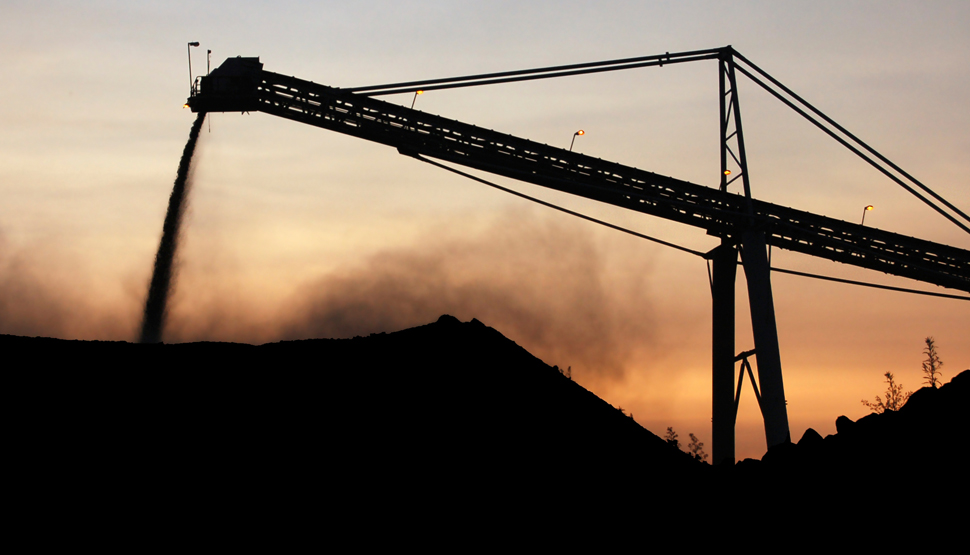Understanding the fire risk in mining conveyor systems
For many mining sites, the conveyor system that drives productivity also introduces a significant yet often overlooked risk.

Conveyor systems are central to efficient mining operations. They move thousands of tonnes of ore per hour, connecting crushing stations, stockpiles, processing plants, and ports. But for many mining sites, the very system that drives productivity also introduces a significant yet often overlooked risk.
Conveyor belts are typically made of flammable materials that make them highly susceptible to fire damage. This can lead to more than just a belt replacement job, taking out entire galleries and potentially shutting down production, which could cost millions in lost output.
FM has been working with the mining industry to address this issue for decades. Our data shows that fire is the number one cause of property loss involving conveyor systems. And yet, it’s still a risk that can be unintentionally designed into infrastructure through layout decisions, enclosure types, and the absence of integrated fire protection.
Why conveyor systems are vulnerable
The challenge with conveyor fires extends beyond the ignition event. A rubber or synthetic conveyor belt can act as its own fuel source, even if it's carrying non-combustible materials like iron ore. Fires can spread quickly along enclosed galleries, often shielded from hose lines or firefighting access. This can cause widespread structural damage that takes months to repair or rebuild.
- Several factors compound the risk:
- Enclosed conveyors trap heat and smoke, making manual fire suppression difficult.
- Multi-tier or stacked conveyor layouts can block sprinkler access to lower belts.
- Cold climates can freeze unprotected sprinkler systems unless dry-pipe or pre-action systems are installed, while hot, dry climates can increase the likelihood, severity and duration of fires.
- Poor housekeeping creates debris and friction points that can accelerate ignition and add weight to galleries, making them more vulnerable to collapse and damage from weather events.
- Hot work, such as welding or grinding, is the most common conveyor ignition source, introducing sparks and heat in already vulnerable areas.
Most sites have at least one high-priority conveyor system that represents a single point of failure, connecting two major parts of the operation. If that conveyor is damaged or destroyed, there may be no immediate workaround.
Research-driven solutions
FM has been studying conveyor fire risk since the 1960s, when the US Bureau of Mines first approached us to investigate underground conveyor fires. Since then, we’ve built decades of experience-driven insights and conducted full-scale fire testing at our Research Campus using purpose-built conveyor galleries. This extensive expertise has helped refine the industry’s understanding of fire propagation, sprinkler spacing, and structural risk.
We’ve developed five best-practice recommendations to help mining operators protect conveyor systems from serious damage, including:
- Use non-combustible materials and optimal layouts: Select non-combustible materials for construction wherever possible, and design conveyor layouts to allow sufficient spacing for effective automatic sprinkler coverage.
- Manage hot work effectively: Strictly control welding, grinding, and other hot-work activities. Always implement rigorous fire watch procedures, particularly in dry climates and challenging maintenance environments.
- Provide adequate fire protection with targeted sprinkler coverage: Install automatic sprinklers within enclosed conveyors. Sprinklers may not be necessary if conveyors are open, built with non-combustible enclosures, and easily accessible to firefighting teams. However, internal sprinkler coverage is critical for fully enclosed galleries.
- Commit to proactive maintenance and housekeeping: Regular inspection, testing, and maintenance of conveyor components, such as bearings and drive systems, are essential. Conduct routine thermographic scans and alignment checks to identify risks early. Maintain strict housekeeping protocols to eliminate ignition sources and structural overloading risks.
- Develop contingency plans and keep essential spare parts: Document clear contingency plans for conveyor breakdowns. Maintain routine spares, such as replacement belts, drive components, and critical bearings, to minimise downtime in an emergency.
Our data shows sprinkler placement and spacing are crucial to controlling conveyor fires. In many cases, effective protection can be delivered with fewer sprinklers and less water than previously thought, reducing weight, supply requirements, and cost without compromising safety. That might free up capital for the protection of more infrastructure.
Importantly, not every conveyor on a site needs the same level of protection. That’s why prioritising fire protection for high-risk systems – those with critical functions, enclosed designs, or difficult access – is essential to minimising both loss and downtime.
Our extensive conveyor fire testing provides deep insight into the key risks and considerations for protection. The video below provides an overview of the outcomes and findings of this research:
Reducing downtime events from months to hours
FM’s loss data shows that properly protected conveyors can dramatically reduce the scale and cost of a fire. In cases where enclosed galleries have internal sprinklers, fire damage is often limited to a single belt section. Downtime can drop from three or four months to just a few hours, a difference that’s operationally and financially significant.
These insights are consolidated in our Property Loss Prevention Data Sheets, which guide the mining industry on practical steps to reduce risk across conveyor types, climates, and operating conditions. Our engineering teams use these recommendations to support mining clients worldwide in designing more resilient infrastructure from the ground up.
To explore FM’s full guidance on protecting critical conveyor systems, download our free conveyors data sheet here.
